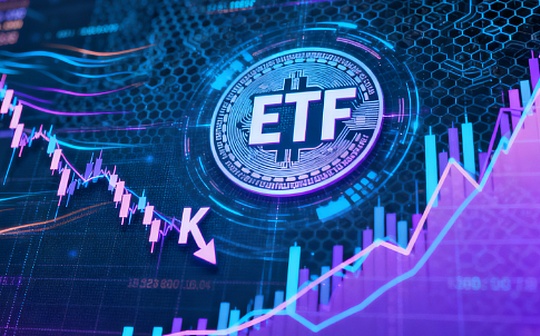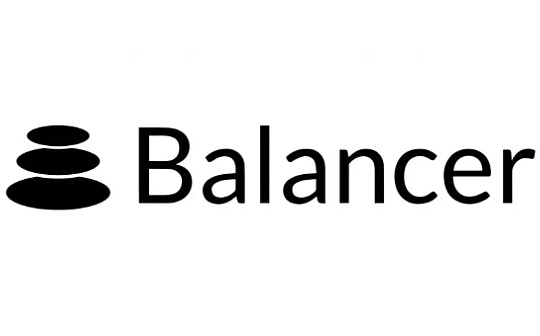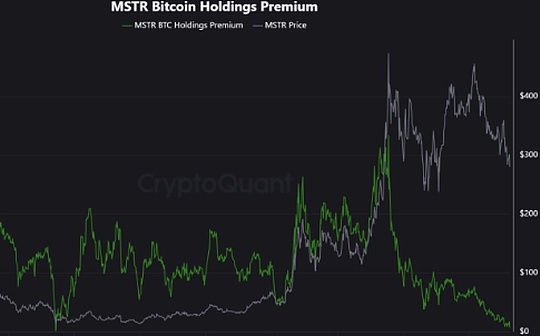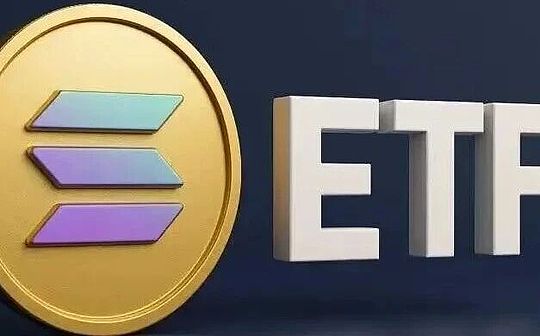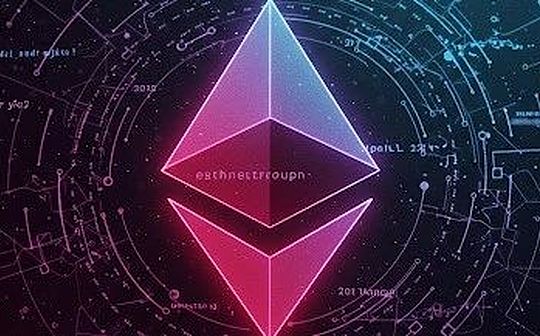
Compilation: Vernacular Blockchain
On May 7, Ethereum completed the Pectra network upgrade, opening a new chapter in ecological development.Taking this as an opportunity, Tamas Stanczak, the new co-executive director of the Ethereum Foundation, and Shay Wong, interviewed Bankless, explained their ideas and determination to promote change.
In the past, the community criticized the Ethereum Foundation’s execution speed, communication methods, and continuous coin selling. In this interview, two responded one by one:
-
A direct explanation was given to community questions, including the necessity of “selling coins”.
-
Elaborate on the three strategic focus of “extending L1, expanding Blobs, and improving user experience”.
-
Clarify the technological development path from Pectra to Fusaka (expected fall) and then to the upgrade of Amsterdam next year.
-
Plan to upgrade the hard fork to6-month cycleand long-term expansion goals are proposed, such asExpand 100 times within four years.
The following is a partial selection of the interview content, compiled by Vernacular Blockchain:
Q1: Please introduce your background and how you came to the Ethereum Foundation to hold this position?
Shay Wong:My background is computer science.I joined the Foundation in 2017.At the time I was a core protocol researcher working on the first version of Sharding Proof of Concept (PoC).Since then, I have been closely involved in the work of the Ethereum protocol, when it was just called a consensus protocol.With the advent of Can chain, I focused more on the consensus layer in the Ethereum protocol and contributed to the transition to proof of stake (i.e. merger).My role is a bit like the co-lead of the Foundation’s consensus R&D team, mainly responsible for the norms of the consensus layer, and as a coordinator between the research aspect and the client (CL).
Before joining the leadership team, I thought the role of the Foundation Fellow was very special, not just studying functional characteristics.We also care about how these features will affect users.Last December, I joined the leadership team.This experience helped me to be co-executive director with Tomasz.
Tomasz Stanczak:I was probably in touch with Ethereum at a small gathering in London at the end of 2015 or early 2016.At that time, I worked in the traditional finance industry.In August 2017, I founded Nethermind, a core development infrastructure company.I started reading the yellow book and felt that the best way to learn was to implement it, so I started writing code in C# and gradually went deeper into the infrastructure.
I imagine that sooner or later Ethereum will need professional tools, like a “data market”.Joining Flashbots in 2020 and participating in MEV solutions has greatly accelerated my journey.At that time, I was also developing the Oiler project and trying to build a block space Gas transaction solution.Nethermind grew to about 300 people and introduced about 600 people to the ecosystem through internship programs.A few months ago, I and Aya gave advice on leadership directions.In February this year, I contacted again and finally decided to join.I think Ethereum needs help and leaders.
Q2: What does this joint executive director position mean and what is your vision?
Shay Wong:The executive directors of the Ethereum Foundation need to think longer-term because we are a nonprofit organization.Our mission is to become the manager of the ecosystem, stand up when the ecosystem needs us the most, focus on key areas, and empower other participants.We need to establish principles for ourselves that should not be shaken frequently, but also strengthen strength and resilience so that we can be flexible in focusing on the dynamic issues we deal with every day.
Tomasz Stanczak:I bring experience and vitality to build organizations and work in ecosystems.I have been nomadic for the past four years and have met many builders.I aim to help improve the internal structure of the foundation and speed up the process.There are about 40 leaders in the foundation who lead small teams and need to be given space to realize that they are the real leaders of EF.
There are some small things within the foundation that can help a lot, and there are many talented people who can communicate a lot.This is almost the first thing I have started to solve before I officially started work.With my experience building clients, I can look at challenges from a technical perspective.I’ve opened my schedule over the past few weeks to hear feedback.We hope that the foundation can communicate more actively and not avoid problems, even if it can sometimes be uncomfortable.
Q3: The era of Aya Miyaguchi is defined as “subtraction gain”.How do you define a new chapter under your leadership?What kind of achievements do you hope to leave?
Tomasz Stanczak:I see my role as an executor rather than a vision setter, operating within the vision that Shay and I set together, and working to bring dynamic, short-term change over the next year or two.It’s like you planted a garden, and now you need to trim and organize everything that grows there.I hope Ethereum is seen as a global neutral layer of global economy and transactions.
This is winning through influence and bringing values that we really care about:These are important to us when we talk about privacy, security, open source access, and the censorship resistance of protocols.We cannot achieve this without the impact of the agreement and without being integrated into all future economic, governance and AI processes.The success of L1 will empower L2 and jointly spread the values of Ethereum.Everything should run on Ethereum in the future as it does on the Internet.
Shay Wong:I told myself, I want toLead with a clear way, act with purpose, and build without obsession”. It’s about the world we want to live in, not just personal achievements. Ethereum should be more than just a product, it’s about culture, and the world we want to live in.I hope Ethereum will become the most decentralized, license-free, and open blockchain in the world.To do this, we need to develop in some ways, but growth and principles should complement each other.We need balanced principles and resilient growth.
Q4:The community generally believes thatThe Ethereum Foundation does a great job in research, values, and client diversity, but lacks in execution speed, communication (such as roadmaps), and connections with actual users (such as DeFi users).How do you view these feedback?
Tomasz Stanczak:Everything people complain about is very real.I’ve had about 200 conversations in the past two months and heard similar feedback.We need to clarify the Polaris target and increase the speed.We need to optimize the developer introduction process, communicate with DeFi builders, clarify the roadmap (such as L1/L2 relationship, pledge future), and improve communication to avoid the image of “ivory tower”.
We cannot get stuck in endless research and need to adapt to market changes.Many people are willing to help, and some will say, “I’ve been dormant for the last three or four years, but I’m ready to come back and help.”evenPeople inside the Ethereum Foundation are also extremely impatient with change, and they themselves want to participate.
Q5: Can these problems – slow speed, insufficient communication, and out of reality – be solved?
Tomasz Stanczak:Very OK.Many problems can be solved through small communication adjustments and process optimization.The key is to activate decision makers in the community and within, empower them to accelerate their actions and not wait.
We need to introduce application developers into the planning stage earlier.And take the initiative to find those who are most likely to oppose a certain function and listen to their opinions at the beginning, thinking about how to build something so important that even opponents are convinced by the overwhelming opinions of others.A product-centric mindset is at the heart of solving these problems.
Q6: You mentioned “product-centric Ethereum”.Does this mean more attention to practical applications and user needs?
Tomasz Stanczak:A product-centric mindset is the basis for achieving our three goals (Extend L1, Expand Blobs, Improve UX).It means we have to keep thinking: Why do we make this change?Who did this for?And let users participate in co-design.At the same time, we must also adhere to core values and quality standards.
For example, if you consider EOF or extending L1, you should ask: What impact does this have on decentralization?Which users will be affected?What are their opinions?We need to reorganize the ACD meeting to include product discussions.Developer Experience (DevX) is also part of the user experience.We need to provide builders with a clear roadmap and support.For example, what happens after a hackathon?What will happen on Monday the next day?Will they start building on Ethereum?Do they feel like Ethereum is a product that provides them with answers, clearly explaining how to build, which technology to choose, who will help, and how to get funding?
Q7: What are your specific ideas about the indicators for measuring success?
Tomasz Stanczak:Not all indicators have been finalized.We need to implement our goals to the team and create an internal dashboard.In terms of L1 expansion, we have a preliminary goal: 3 times this year and 10 times in total next year.Dankrad proposed an exponential roadmap of 100 times over four years.
This process includes: first reviewing all clients, then making changes to the execution layer and consensus layer through EIP, and finally accelerating mainly through ZK technology in the next three to four years.This 100x goal will become the anchor for our organization’s research and development.We want to go to each research team to ask: How does your work serve this 100x goal?Should I serve the first, second, third or fourth year?
Q8: The community sometimes gets rightEthereum FoundationHave unrealistic expectations.What areWhat the Ethereum Foundation doesn’t actually do or out of its scope?
Shay Wong:One of the most controversial things is the sale of ETH.The community expects us to hold, but for operation and funding we must sell.Secondly, we will do more to allocate internal resources for the most core things that only EF can do.But for other levels of things, such as some business expansion, we prefer to support them through funding.The role of EF is more of a coordinator, helping people find the right resources in the ecosystem.
Tomasz Stanczak:The Ethereum Foundation should step in when something is missing in the ecosystem, but it is usually to help the corresponding organizations emerge and grow.We do not play the role of coordinator or owner.For example, communication with Wall Street or the government, the foundation certainly doesn’t want to coordinate these efforts, but we want to be able to answer questions and provide expertise instead of avoiding interactions as we did in the past.We are not the owner of the Ethereum Agreement and do not act as the owner.
In terms of engineering, we have the Geth team, which is important for research, but we don’t build consensus clients.We avoid building applications or infrastructure directly because the ecosystem can do better.In terms of business development, we hope to play a more active role as a “helper”: connecting applications, customers, talents, and research results. Foundations are often the first point of contact for many participants.Rather than just providing funding each time, we want to actively help founders solve specific problems they face in the early stages.A big part of Ethereum is creating networks, and creating networks with social layers is something the foundation can do very well.In terms of marketing, we focus on communication and clarity rather than advertising.
Q9: Regarding the specific roadmap and rhythm, what is the next hard fork plan?
Tomasz Stanczak:We plan to speed up the pace of hard forks to about once every six months.Next is Pectra, in addition to the staking-related Max Effective Balance changes, there are also huge improvements in account abstraction and user experience brought by similar EIP-3074 (SFS 102).Currently, we are working hard to ensure safety.
We will immediately have the next hard fork after Pectra deploymentFusakaThe development network is launched, with the goal of launching it in September or October this year.The key is to ensure no delay.At that time, there will be large gatherings of core developers and researchers to accelerate the goal.
The hard fork afterwards isAmsterdam, the upgrade is planned to be completed by the end of next year, which will include acceleration of L1 expansion.Some L1 expansion work has begun now, some do not require hard forks, and some require EIP.Meanwhile, the ecosystem development department led by Jane Smith is reorganizing the process to better serve builders’ needs in tokenization, RWA and more.ACD meetings are also being adjusted to accommodate faster delivery paces and get application developers involved earlier.

